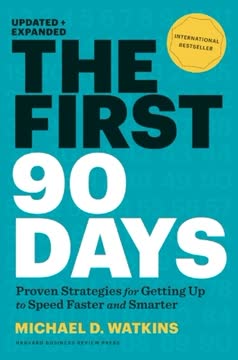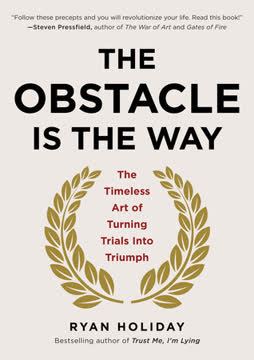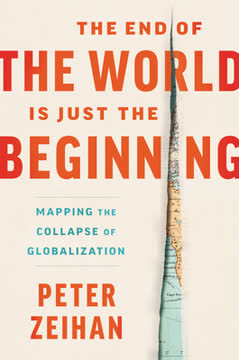Key Takeaways
1. Right-Side Up Thinking: Focus on Them, Not You
Consulting isn’t about YOU. It’s about THEM.
Invert the pyramid. Shift your focus from your own services and expertise to your prospects' problems, needs, and situations. This fundamental change in perspective is the key to attracting clients and growing your consulting practice.
Typical vs. Right-Side Up. Instead of worrying about what prospects think of you, worry about what prospects think about themselves. Instead of pushing approaches you're comfortable with, use approaches they pay attention to. Instead of marketing your capabilities, market their situation, their problems, their aspirations, and their potential wins.
Instant adoption. Start by examining the opening lines of your emails to prospects. Do they begin with "I" language or "You" language? Shift the focus to your prospects' needs, goals, and situations in all your communications.
2. Confidence Comes from Serving, Not Introspection
You boost your self-confidence by reflecting less on yourself and more on your targets’ problems and aspirations.
External validation. Instead of looking inward for confidence, seek external validation by focusing on your clients' problems and aspirations. Your belief in your value as a consultant comes from others, not from yourself.
Three-part confidence booster:
- Powerful Offering: Is there evidence that clients have purchased what you offer?
- Strong Capabilities: Is there any evidence that you have solved your clients’ problem?
- Proven Value: Is there any evidence that your clients value what you do?
Defeat negative self-talk. Recognize negative thoughts as delusions and choose not to interact with them. Like Nash in "A Beautiful Mind," acknowledge their presence but refuse to let them control your actions.
3. Fish Where the Fish Are: Target Awareness and Urgency
You aren’t fishing where the fish are.
Awareness and urgency. Focus your energy on prospects who are already aware they have the problem you solve and have an urgent desire to solve it now. This is a far easier place to win consulting business than trying to convince prospects they have a problem or create urgency where none exists.
Strategies for creating urgency:
- Highlight the consequences of inaction
- Compare to benchmarks
- Remove roadblocks
Exposing need. If prospects aren't aware of their problem, use a diagnostic tool that is low cost, low risk, and uses the prospect's own evidence to convince them.
4. The Four Rights: People, Problem, Solution, Time
If you want to open the floodgates and turn a revenue trickle into a stream or even a raging torrent, you need to identify “The Four Rights.”
The Four Rights. To maximize your business development efforts, focus on:
- The Right People
- The Right Problem
- The Right Solution
- The Right Time
Reachability is key. The Right People are those you can engage in conversation quickly. Start with your current contact list and prioritize those who will respond to your outreach.
Big enough, urgent enough, high enough. The Right People have a problem that is big enough, a desire to solve it that is urgent enough, and signing authority that is high enough.
5. Simple, Relevant Solutions Trump Breakthroughs
Consultants should never focus on differentiation.
Reliability over differentiation. Clients aren't looking for different; they're looking for a solution they can rely on. Focus on delivering results and building trust, not on trying to be unique or innovative.
The Right Solution criteria:
- Simple
- Easily communicated
- Highly relevant
- Efficient
Solve the client's problem. The Right Solution is straightforward and focused squarely on delivering results for the prospect's specific problem or aspiration.
6. Craft a Fishing Line: Precise Target, Defined Issue
If you want to be a great angler, you need a strong Fishing Line.
The Fishing Line. Create a ten-to-fifteen word statement that succinctly and precisely describes your target and the issue you address. This statement should be easy to remember, allow prospects to self-select, and be easily repeated to others.
Fishing Line vs. Elevator Pitch. A Fishing Line is not a thirty-second commercial meant to win business. Instead, it's a short phrase designed to create conversations.
Common Fishing Line mistakes:
- No problem
- Too broad a problem
- Too many problems or targets
- Too long
- Too broad a target
- Too approach-oriented
- Too much justification
7. Visibility Requires Relevant, High-Value Exposure
Most struggling consultants don’t have a VISIBILITY problem, they have an IMPACT problem.
Visibility vs. Exposure. Exposure is just getting your name out into the world, while visibility occurs when prospects start to pay attention. To become highly visible, you need exposure, relevance, and high-value.
Five Marketing Musts:
- Writing
- Speaking
- Trade Associations
- Digital Presence
- Networking
Prioritize consistency. Choose at least two of the Five Marketing Musts and commit to tackling them consistently. If none of them feels like your cup of tea, you’re going to find yourself in a world of financial hurt.
8. Trade Associations: A Goldmine for Consultants
I’ve seen more consultants generate clients through active, trade association participation than any other marketing approach.
Focus and participation. Trade associations are inherently focused, and the best ones are specialized. Join a committee or two, take on a project, and participate on advisory boards.
Consistency and longevity. Plan on at least a three-year commitment to a trade association. The value of your participation will multiply over time as you build relationships and establish yourself as a trusted resource.
Don't pitch. Be perceived as a member committed to helping, not a salesperson in search of business. Focus on what the trade association needs, not what it can do for you.
9. Relationships = Wealth: Nurture, Don't Just Connect
The more, strong, vibrant, enriching relationships a person has, the wealthier he is.
Relationships are everything. You can win consulting business without marketing, optimizing your impact, or knowing how to put together a compelling proposal, but you can't win without relationships. No executive is going to hand you a large sum of money without having some sort of one-on-one relationship with you.
The Master Strategy. Your most reliable and productive source of new relationships (and clients) should be introductions and referrals from existing clients.
The Transfer of Interest. Use this technique to ask for introductions by focusing on interesting connections rather than sales opportunities. Ask, “Who have you run into recently who’s intriguing, creating change or shaking things up?”
10. The Turn: Gracefully Shift to Business
When social and market norms collide, trouble sets in.
The Turn. Use this carefully constructed script to protect the warm, relationship norms while creating a space for market norms: "Would you be open to a separate conversation where we talk about your business, and explore whether my firm can help you achieve your goals?"
Key components:
- Separation (i.e., talking about business in a different conversation)
- Agency (i.e., giving your prospect the choice)
When to use The Turn. Employ The Turn after you've clearly demonstrated Right-Side Up thinking and when your prospect raises a specific issue that meshes with your offerings.
11. Trust is Paramount: The Six Pillars of Success
Clients choose the consultant they trust most.
Six Pillars of Consulting Success:
- Know
- Like
- Trust
- Need
- Want
- Value
The Trust Triangle. Trust is built on three key points: you're considering me and have my best interests in mind, not just your own; you're going to help me by solving my problem; you're not going to hurt me by screwing up or making me look bad.
Build trust. Be trustworthy, build solid relationships, listen actively, and provide credibility boosters, risk reducers, project approaches, terms, and structures that address all three points of trust.
12. The Context Discussion: Uncover Needs, Build Trust
The heart and soul of Becoming the Obvious Choice is what I call the Context Discussion.
The Context Discussion. This carefully constructed approach to discovery is the single, most important conversation paving the way to unlimited clients and financial freedom.
Six Topics:
- Situation
- Desired Outcomes
- Indicators of Success
- Perceived Risks and Concerns
- Value
- Parameters
Platinum Rule. The Context Discussion must be conducted with the decision maker or decision makers.
Last updated:
Review Summary
The Irresistible Consultant's Guide to Winning Clients receives high praise from readers, with an average rating of 4.45 out of 5. Reviewers consistently highlight its practical advice, client-focused approach, and step-by-step guidance for both new and experienced consultants. Many appreciate the book's emphasis on building relationships, identifying niches, and developing effective engagement strategies. Readers find the content actionable, insightful, and valuable for growing their consulting practices. Some mention specific techniques learned, such as conducting discovery meetings and addressing objections. Overall, it's considered a must-read for anyone in or considering consulting.
Similar Books










Download PDF
Download EPUB
.epub digital book format is ideal for reading ebooks on phones, tablets, and e-readers.




